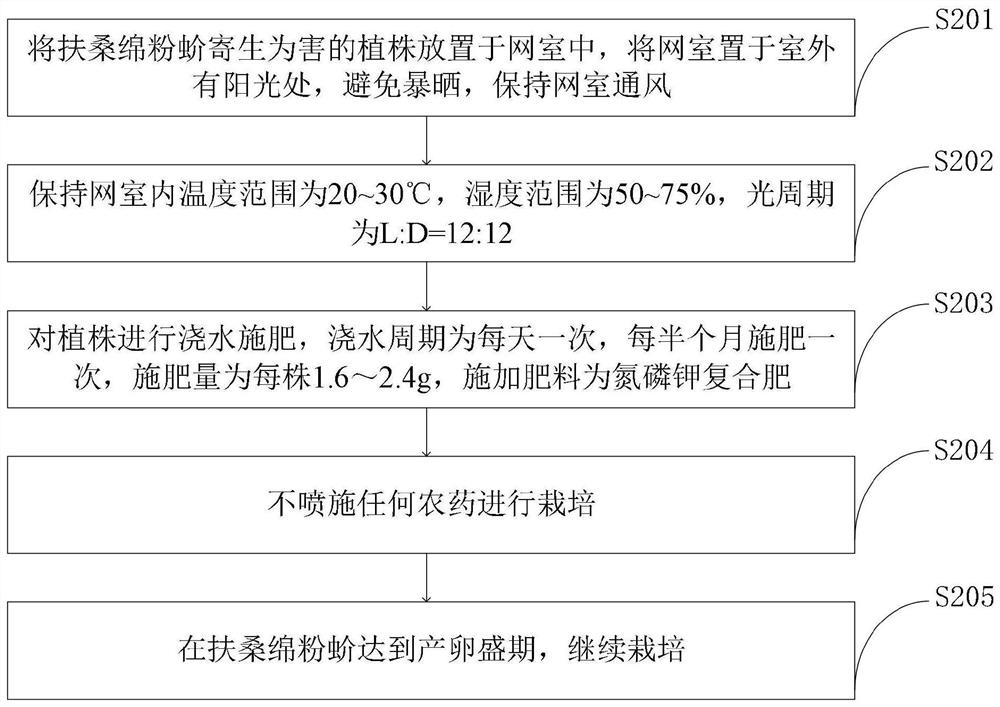Indoor subculture breeding method of phenacoccus solenopsis tinsley
A technology of hibiscus hibiscus and net room, which is applied in the field of insect breeding, can solve the problems of population degradation, inability to subculture hibiscus hibiscus for a long time, and inability to achieve effective reproduction of hibiscus hibiscus, and achieves maintaining vitality and good effect. Effect
- Summary
- Abstract
- Description
- Claims
- Application Information
AI Technical Summary
Problems solved by technology
Method used
Image
Examples
Embodiment 1
[0077] Collect the wild-grown hibiscus plants parasitized by P. hibiscus cotton, remove other insects or diseased plants, and cultivate the host plant in an outdoor net room; record after laying eggs. After the eggs are first hatched, use a soft brush to pick the newly hatched nymphs gently or adhere to the leaves of the host plant; spread wet filter paper on the bottom of the beaker; cultivate ghost needles as the host plant of the 1st instar nymphs, and put ghost needles The leaves were cut off and processed, and then placed in a beaker; the newly hatched nymphs of Pythococcus hibiscus cotton were grafted on the treated leaves of Pygnus chinensis, and the opening of the beaker was sealed with mesh; the beaker was placed in an incubator for cultivation, The 2nd instar nymphs were obtained after the newly hatched nymphs of P. hibiscus cotton had molted their skins; put the fresh and clean single leaf bark next to the 2nd instar nymphs that had just molted, let them climb to the...
PUM
 Login to View More
Login to View More Abstract
Description
Claims
Application Information
 Login to View More
Login to View More - Generate Ideas
- Intellectual Property
- Life Sciences
- Materials
- Tech Scout
- Unparalleled Data Quality
- Higher Quality Content
- 60% Fewer Hallucinations
Browse by: Latest US Patents, China's latest patents, Technical Efficacy Thesaurus, Application Domain, Technology Topic, Popular Technical Reports.
© 2025 PatSnap. All rights reserved.Legal|Privacy policy|Modern Slavery Act Transparency Statement|Sitemap|About US| Contact US: help@patsnap.com



